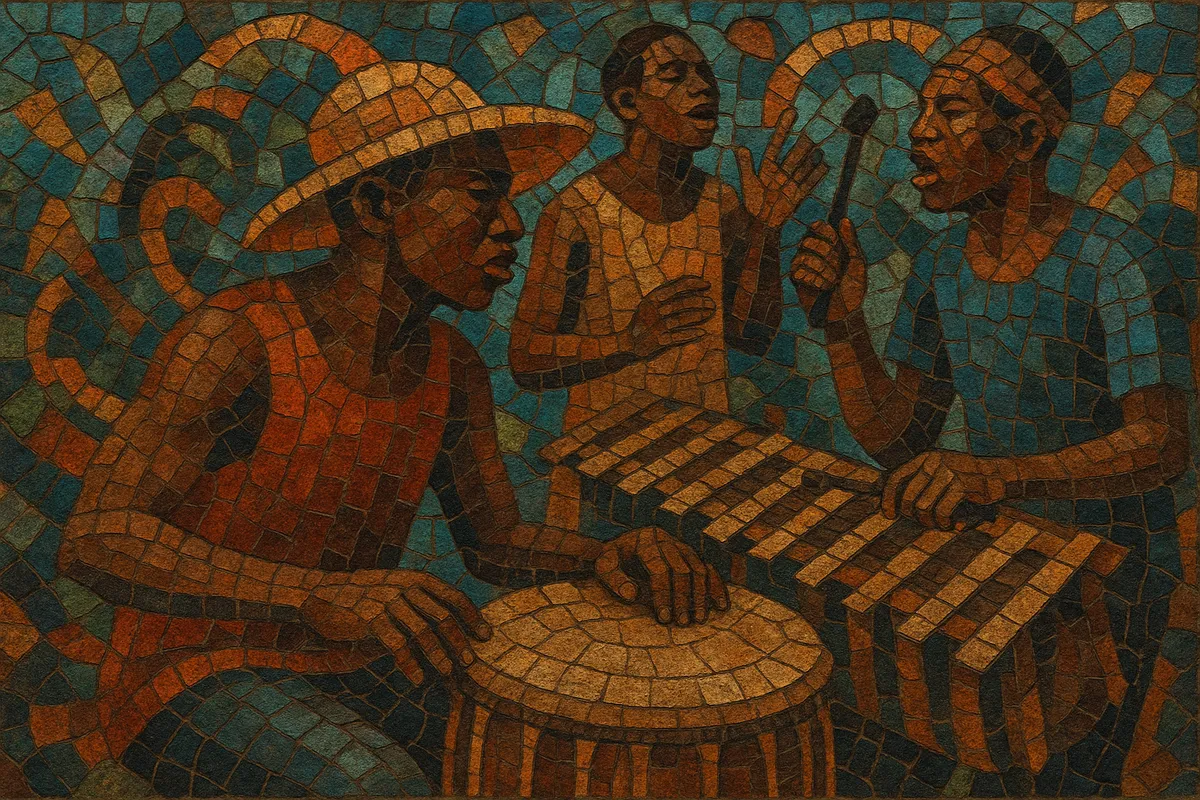Mangambeu is a traditional-popular dance music of the Bamileke peoples from western Cameroon. It is built on densely interlocking percussion, a bright balafon (xylophone) ostinato, and animated call-and-response vocals.
The style typically rides a compound 12/8 or 6/8 pulse with cross-rhythms, handclaps, and an iron bell timeline that keeps dancers locked to the groove. Melodies often draw on pentatonic and diatonic material sung in Bamileke languages such as Ghomala', Fe'fe', Yemba, and Medumba, celebrating community life, chiefs, moral lessons, and social commentary.
While firmly rooted in village ceremonies and festive gatherings, mangambeu has also been adapted for stage and recordings, where guitars, bass, and drum set emulate the interlocking parts of traditional balafon and drum ensembles.
Mangambeu emerged among the Bamileke peoples of western Cameroon as a communal dance-music tradition tied to celebrations, rites, and social gatherings. Its core instrumentation—balafon, multiple hand and barrel drums, rattles, and iron bell—supports cyclical grooves that can last for extended dances, with singers and chorus guiding the ceremony through call-and-response.
With increased mobility and urbanization in the 1950s–1970s, Bamileke musicians carried mangambeu from village squares to towns like Bafoussam, Douala, and Yaoundé. Recording technology and radio exposure allowed ensembles to capture traditional repertoires, while adding guitar and bass lines that mirrored balafon figures and Congolese rumba polyrhythms. This period standardized stage formats and spread the style throughout Cameroon.
In the late 20th century, mangambeu shared audiences with makossa (Douala) and bikutsi (Ewondo/Beti), influencing and being informed by these urban sounds. Assiko’s guitar picking and the pan–Central African guitar language (shaped by rumba/soukous) further colored modern arrangements, without displacing the genre’s essential percussion-led identity.
Today, mangambeu thrives in cultural festivals, community ceremonies, and stage showcases, both in Cameroon and the diaspora. Troupes maintain the traditional dance and drum language, while some artists experiment with hybrid arrangements and studio production. The genre remains a touchstone of Bamileke identity and a powerful example of Central African polyrhythmic ensemble music.


